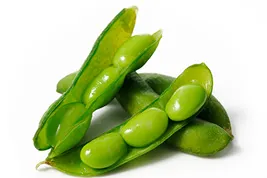Pineapple Pico de Gallo
Pineapple Pico de Gallo
2 c. tomatoes, finely chopped
1 c. pineapple, finely chopped
½ c. sweet onion, finely diced
¼ c. jalapeno, finely diced
¼ Tbsp. lime juice fresh
⅓ c. cilantro, chopped
Salt to taste
Combine all ingredients in a large bowl. Toss to combine. Serve with tortilla chips.
Makes 16 servings. Without tortilla chips, each serving has 20 calories, 0 g fat, 1 g protein, 4 g carbohydrate, 1 g fiber and 40 mg sodium
Chicken and Black Bean Quesadillas
Chicken and Black Bean Quesadillas
4 whole-wheat tortillas
1 c. cooked chicken
½ c. canned black beans, drained and rinsed
½ c. shredded cheddar or mozzarella cheese
(or soy cheese)
½ c. bell peppers, chopped
Optional toppings: salsa and reduced-fat or non-fat sour cream
Place pan on stove and turn to medium heat. Put one tortilla in pan, add half of the cheese and half of the other toppings. Place other tortilla on top of cheese. Cover pan for approximately two to four minutes. Flip quesadilla very carefully to heat other side approximately one to two minutes. Repeat with remaining ingredients. Cut into wedges and serve with salsa and sour cream.
Makes four servings. Without toppings, each serving has 250 calories, 7 g fat, 18 g protein, 29 g carbohydrate, 4 g fiber and 620 mg sodium.
Soy and Spinach Artichoke Dip
Soy and Spinach Artichoke Dip
1 lb. silken tofu, crumbled
1 lb. low-fat cream cheese, cubed
1 c. low-fat mayonnaise
½ tsp. ground pepper
1 lb. frozen chopped spinach, thawed, drained
1 (15-oz.) can artichoke hearts, drained, coarsely chopped
½ c. green onions, chopped
Parmesan cheese, grated, for garnish (optional)
Using a mixer, beat tofu until smooth.
Mix in cream cheese, mayonnaise and pepper in a mixer bowl. Fold in spinach, artichokes and green onions.
Spread mixture evenly in a 9- by 13-inch pan. Sprinkle Parmesan cheese on top, if desired.
Bake at 350 F for 15 to 20 minutes or until bubbly and browned on top.
Makes 25 servings. Each serving has 70 calories, 3.5 g fat, 4 g protein, 6 g carbohydrate, 1 g fiber and
270 mg sodium.
Tortilla Fruit Pizza
Tortilla Fruit Pizza
2 tsp. sugar
¼ tsp. cinnamon
1 whole wheat tortilla
¼ c. vanilla yogurt, low-fat or nonfat (or soy yogurt)
½ c. fruit
Preheat oven to 350 F. Mix cinnamon and sugar together in a small bowl. Spray each side of the tortilla with nonstick cooking spray and sprinkle with cinnamon and sugar mixture. Bake on baking sheet for 5-8 minutes. Let cool. Top tortilla with vanilla yogurt and fruit.
Makes one serving. Each serving has 230 calories, 4 g fat, 7 g protein, 47 g carbohydrate, 4 g fiber and
350 mg sodium.










































